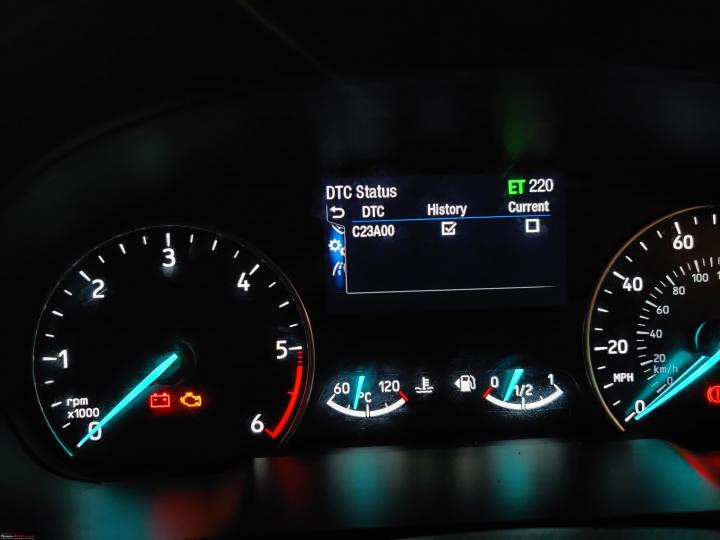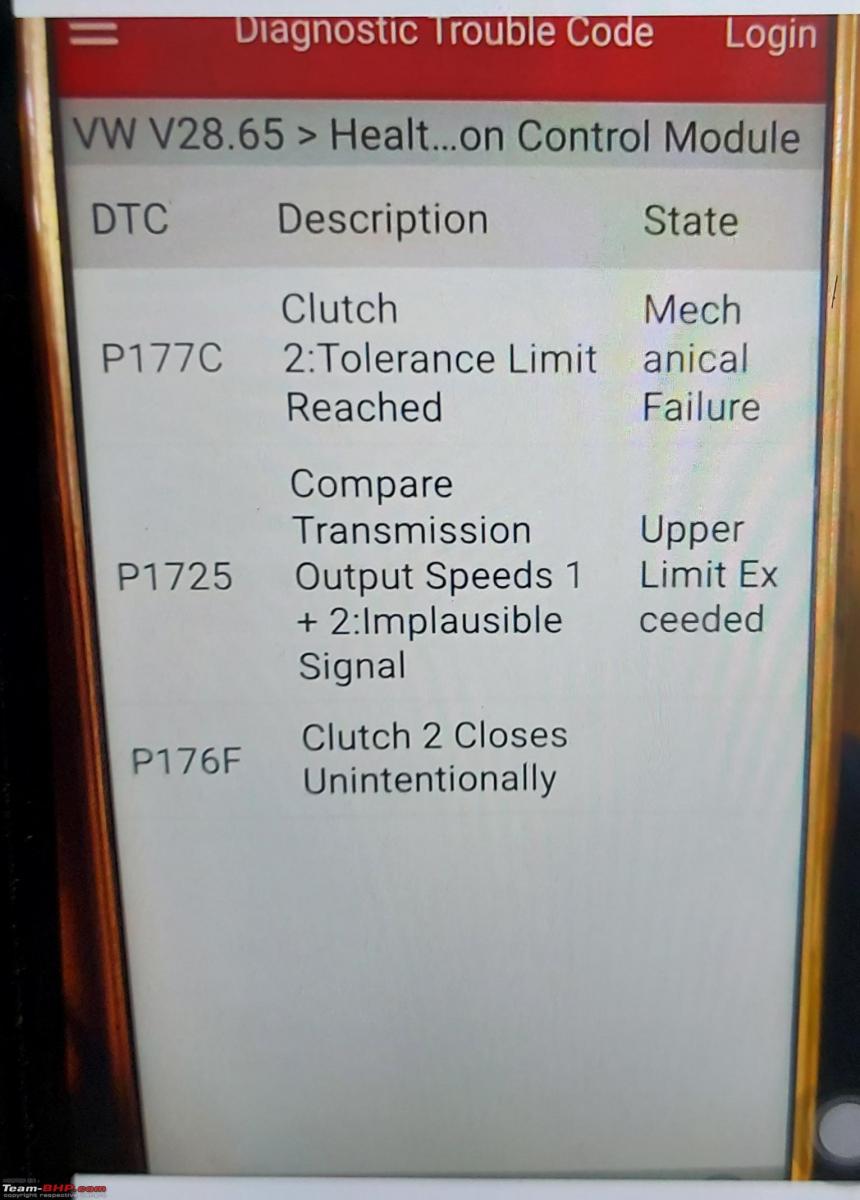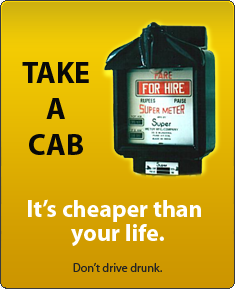News
Understanding a vehicle's DTC / OBD2 Codes
Most of us might fret for a DTC, however, the DTC can help in saving time while you're troubleshooting your car.
BHPian jithin23 recently shared this with other enthusiasts.
Most of us drive our cars to the service centre or an FNG if we have a problem with our car. These folks use a scanner or a laptop to scan for error codes or DTC's at some point in time. Most of us might fret for a DTC, however, the DTC can help in saving time while you're troubleshooting your car. The Check Engine Light would scare even the most prominent technicians and vehicle owners alike.
What's a DTC?
A DTC or a Diagnostic Trouble Code, also known as OBDII codes, are your car’s system for alerting you of vehicle issues. There are typically limits for each system within your vehicle. When the vehicle detects that the issue exceeds these limits, it sends out a trouble code. Most cars post-1996 have an OBD port.
The challenge with this is that every model has different codes and meanings. For instance, a VW won’t have the same codes as a Suzuki. This makes it difficult if you’re reading the codes on your own unless you know the codes for your specific model.
The Four Categories of DTC
- B-codes (body codes): Though body often refers to the outside of the vehicle, B-codes refer to features inside. More include comfort, convenience, and safety features.
- C-codes (chassis): Functions outside of the passenger compartment including brakes, steering, and suspension.
- U-codes (network/vehicle integration): Functions shared among the vehicle’s systems and computers.
- P-codes (powertrain): Include functions such as the engine, transmission, and drivetrain.
DTC codes are five characters long. Each character in the DTC provides a different piece of information about the vehicle’s problem.
Steps to Interpret a DTC
1. The first character is always an alphabet viz.
P – Powertrain. Includes engine, transmission, and associated accessories.
C – Chassis. Covers mechanical systems and functions: steering, suspension, and braking.
B – Body. Parts mainly found in the passenger compartment area.
U – Network & vehicle integration. Functions managed by the onboard computer system.
2. The second character is a number
The first letter is followed by a number, usually 0 or 1.
0 – Standardized (SAE) code, also known as generic code (sometimes called global)
1 – Manufacturer-specific code (sometimes called enhanced)
The following three digits are purple digits, which may be hexadecimal and correspond to incremented numbers. Typically, the P family codes have sub-families defined by the first digit.
3. The third character is a number
For powertrain codes, this number tells you which vehicle subsystem has a fault. There are eight:
- 0 – Fuel and air metering and auxiliary emission controls
- 1 – Fuel and air metering
- 2 – Fuel and air metering – injector circuit
- 3 – Ignition systems or misfires
- 4 – Auxiliary emission controls
- 5 – Vehicle speed control, idle control systems, and auxiliary inputs
- 6 – Computer and output circuit
- 7,8 & 9 – Transmission
You may also see an A, B, or C, which can refer to hybrid propulsion systems.
4.The fourth and fifth characters are numbers
The final piece of a DTC is a number that defines the exact problem that you’re experiencing. It can be a number between zero and 99.
Let's consider an example:
"B0639": This means that the error is from the Body Control Module, Generic issue, Computer and Output Circut and 39 being the actual fault description. The fault number can vary across different manufacturers. In some cases, the checksum for the hexadecimal value might also appear.
An illustrative example:
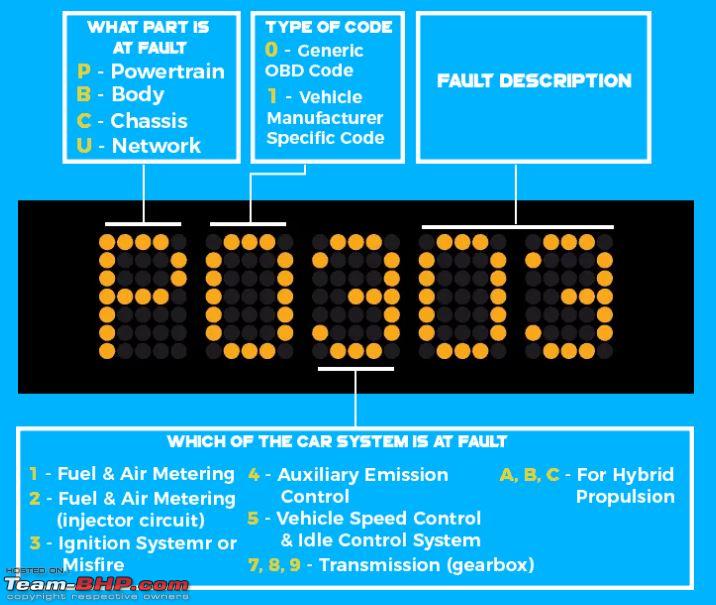
Now, let's consider a car make's DTC code (This is easier to identify as they're mentioning the problem and the cause for the problem):
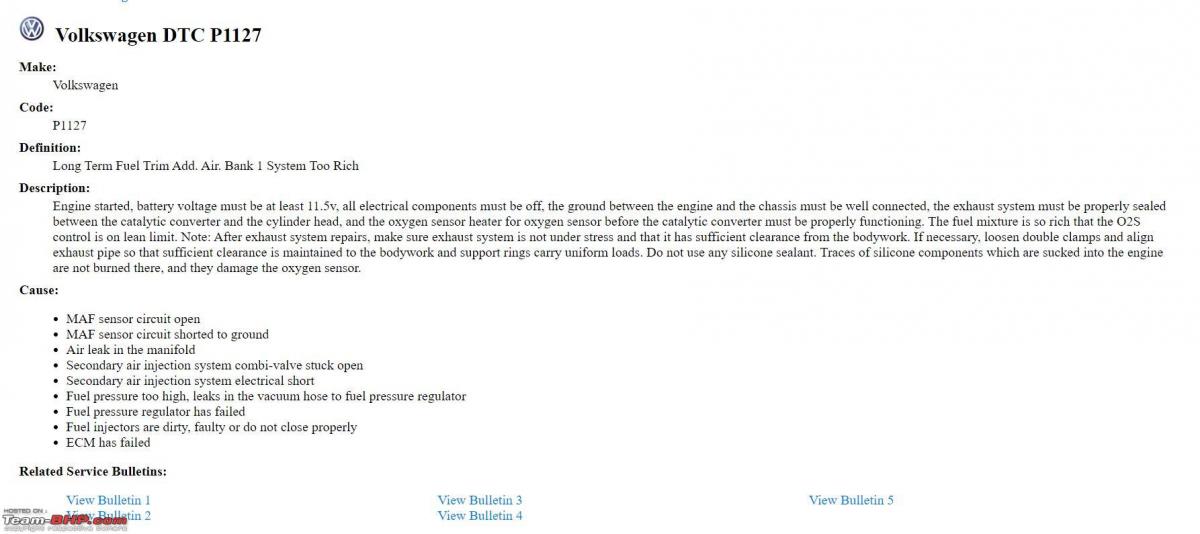
Here's a pic of the DTC code from my car's Speedometer:

To access the repository of codes, this link has almost all the car manufacturers list except Tata and Mahindra.
Hope this information helps in understanding DTC codes. Have fun solving your car's codes (I hope these instances do not occur though).
Here's what BHPian vigsom had to say on the matter:
Short but sweet topic to kickstart a very healthy technical discussion.
When OBD II scanners arrived, people would make a big deal of it, and even now, it is so in India. However, overseas, a decent mid-budget scan tool with the capability to perform all systems diagnosis, oil Reset, EPB, SAS, BMS, DPF, Throttle A/F are available for as low as 250 USD. That is like the money one would spend on a mid-budget smartphone. I was targeting an Autel scan tool but shelved the plan in Mar-2020 due to the current situation. In India, we have caRPM but there are some strings attached about yearly subscription charges.
I've seen DTCs on my Grand Vitara twice - one with a transmission error, and the other, a stored DTC but without the CEL on. Both, shown below, were eventually linked to clipped wires thanks to rats . The third one shown below is of the DSG of a VW GT TSI, still unsolved.
P2764 - Transmission Torque Converter Clutch related:
P0463 Fuel Sensor related:
P177C, P1725, P176F DSG Clutch on a VW Polo GT TSI (Unsolved yet):
Check out BHPian comments for more insights and information.



